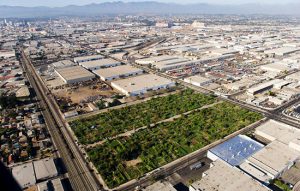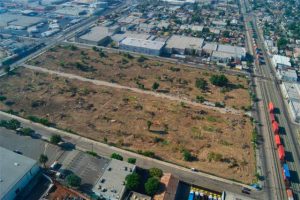A review of “The Garden”, a documentary directed by Scott Hamilton, 2008
Kor’darius Melton & Val Helenberger
Key Aims & Messages
The primary aim of this documentary was that the Spanish people were trying to keep their garden and work that’s all it was. Another aim was they was trying give a message out saying why they have to be treated uncertain and why did they ruin their garden. It hurt a lot of people when the police ruin their garden, because that’s what they did everyday by going by their day and working in the garden. One of the key messages they was trying to convey in the documentary was a woman said “justice for all”. That meant it should be justice for what happen to their garden by the police officers. There should be punishment, because you can’t just go messing with people stuff that doesn’t belong to you. In the film, you will see the officers handling the Mexican people bad and ruining their stuff.
Ideologies
The ideology they were promoting in this film is about racism and selfish as well. Because in the film you can tell the white American police officers didn’t want to do anything with the Mexicans. They feel like Mexicans shouldn’t be in America, they feel like they should be back in the boarder. The strengths of the film where the Mexicans was sticking together and not giving up on each other and trying to get their garden back and they will go on strike and wanted justice. The weakness was they wasn’t fighting back enough to get their property back, they will do all the rioting and strike but not fighting hard to get their garden back
Key Storylines
This documentary is about a 14-acre community garden called South Central Farm, the largest in the United States. The story follows the creation of the garden after the LA riots in 1992 on land purchased by the city for $5 million. The garden was seen as a family and community space and fed many people in the surrounding community, largely lower income Latinos and immigrants. In those years, the gardeners turned a giant concrete slab into a community garden sectioned off in plots for over 200 families to grow their food. A few years later, the original seller wanted to repurchase the land from the city for the original selling price of $5 million and was sold by the city. However, the city kept 2-acres to build a community soccer field, of which the town already had four other community soccer fields, one of which had raised $4 million for development but remained a dirt patch of land with some paint and a few soccer goals, so where did all of this money go? This was never answered and the documentary shows some suspicious activities from city, but never really sheds light and explains them much at all.

The owner then tried to evict everyone off the property in 2 months time to bulldoze for a warehouse to be built. The South Central Farmers held protests and got a civil lawyer, filing for an injunction to stop the eviction, that was passed but later overturned by another judge. After the overturning of the injunction, everyone was to be evicted in two weeks time and the gardeners continued to protest and even started to have internal issues amongst the gardeners on how things should be ran. The owner of the land then listed the property for over 3 times the purchasing price; $16.2 million. During those two weeks, the community rallied and even got onto national news and ended up raising the $16.2 million to purchase the property with the help of celebrities and political figures, such as the Mayor and a presidential candidate. However, the owner declined their offer because of their actions and beliefs leading up to this point and the plot was then bulldozed over in front of the community with a large police presence. In the end, the city gave the South Central Gardeners 7-acres in the same town for gardening and they were able to purchase 80-acres in Bakersfield. Three years later, the original site of the garden has not been built on and remains vacant, as seen in the picture below(as of 2008).

Linkages to Class
Food systems: “Institutions and process that transform sunlight, water, and soil into meaning-laten foods”. This garden was precisely that. It took the sun, water, and soil and made food for a tight knit community. They would produce, distribute in some instances, marketed the garden as a community space, as well as prepared and consumed the product as individuals, families, and a community. This garden was symbolic of their community and hard work they put in to turn a concrete slab into something wonderful for the area.
Food ways: “… the whole interrelated system of food conceptualization and evaluation, procurement, preservation, preparation, consumptions and nutrition shared by all the members of a particular society”. This community garden provided fresh produce to the community as well as low income and immigrant families. This garden helped establish the types of foods they ate by producing the foods themselves. They would also have group meals together at the garden, eating products they grew.
Culture: “a set of norms, beliefs, and values (and other conventional understandings) shared by a specific identifiable social group, such as an ethnic group, class, professional organization, corporation, or discipline”. The garden became a place for the community to go and produce their own food. Some plots were even handed down through the family. It became a community norm to be a part of the garden, even if you did not grow produce. People would sell produce to the community occasionally to help each other out. It is a safe and meaningful place for this group to come together, like a family. It became engrained in the communities lives.
Opinion
KD: My opinion about it, is that they made very well. To the point you think this happen yesterday. The approach was definitely there, you can the citizens going crazy and being sad. and you can see the police officers doing the most in the film.
Val: I think the documentary did a decent job at making the case for the side of the South Central Gardeners, but I do not think they did the entire situation justice. There was not enough time in this documentary to fully explain things, especially the legality of land ownership and use and things of that nature. The documentary ended in the community members crying around the borders of the garden about the loss of something so special to them. The film then cuts to briefly talk about the 87-acres (in two separate locations) they gained as a result of all of this. This movie had terrible things occurring, but I do not think it got the recognition that it should have.
References
- Uncube. Surviving South Central. uncube magazine. https://www.uncubemagazine.com/blog/12844525. Published May 5, 2014. Accessed March 25, 2021.
- The Garden: A Film, A Call to Action. Civil Eats. https://civileats.com/2009/05/11/the-garden-a-film-a-call-to-action/. Published August 10, 2018. Accessed March 25, 2021.
- The Garden (2008 film). Wikipedia. https://en.wikipedia.org/wiki/The_Garden_(2008_film). Published November 10, 2020. Accessed March 25, 2021.